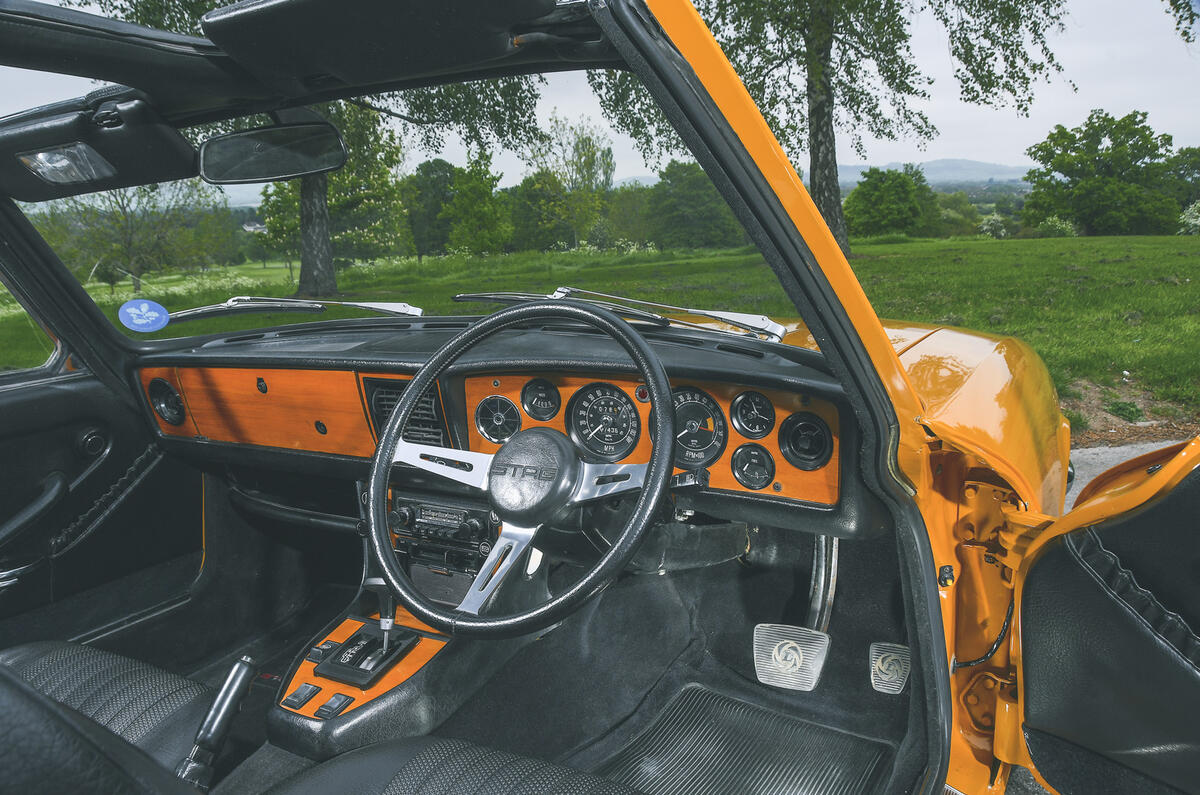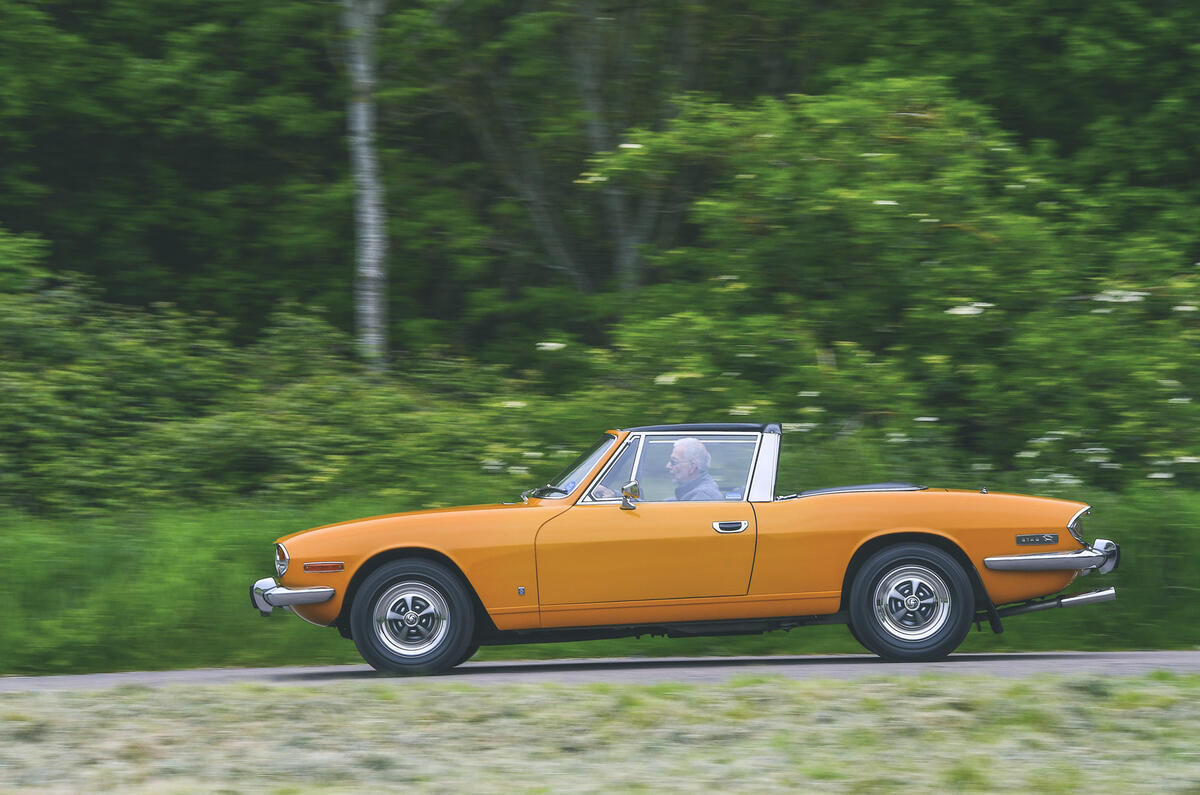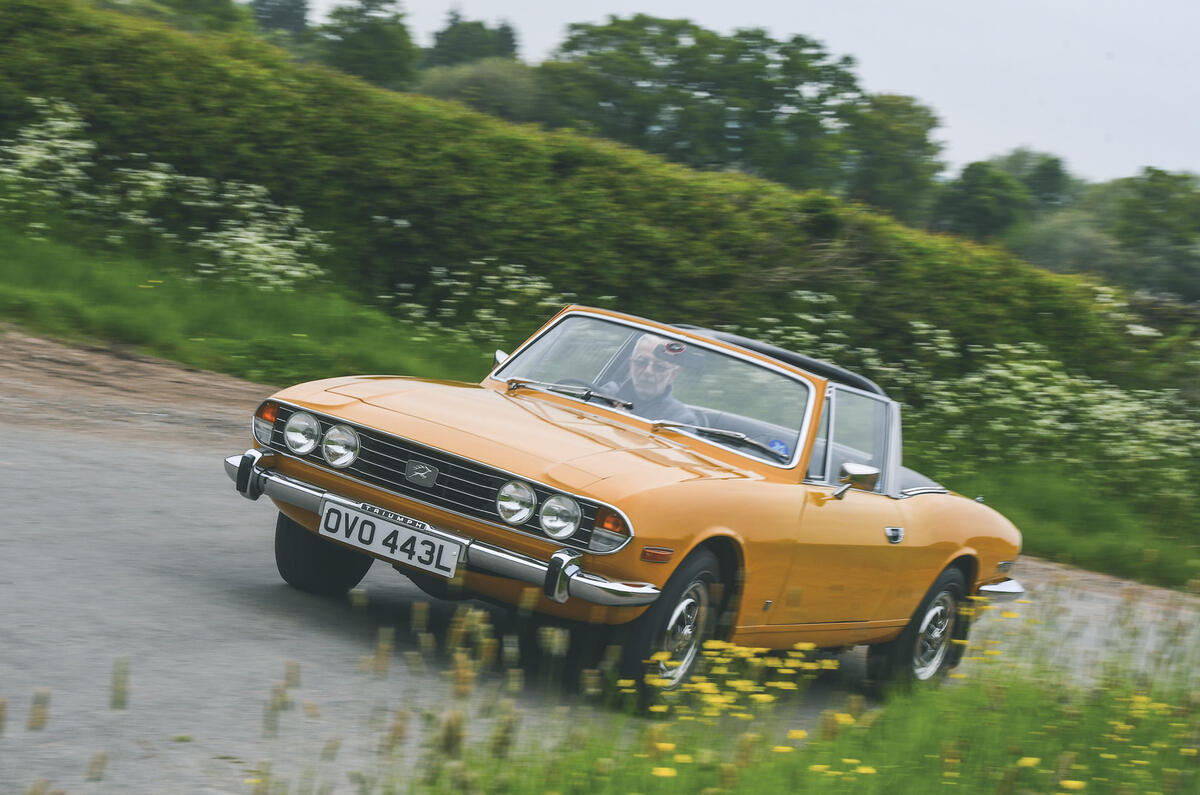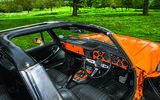Michelotti styling: tick. James Bond cameo: tick. Things were looking up for Triumph’s four-seat convertible when it was launched in 1970. And then rumours began to circulate about its bespoke but unreliable 3.0-litre V8 engine.
Cooling problems, an under-sized water pump located in the wrong place, head gasket and timing chain failures, warped cylinder heads, internal casting sand deposits… Just a few of the issues that plagued it then, to which, today, you can add rust – lots of it. That so many survive (around 8000 in the UK) is testament to the Stag’s enduring appeal. Triumph from adversity you might say, if you enjoy a bad pun.
Read more: Triumph TR2 returns as lightweight electric sports car
What’s to like? Those looks, for a start, and that bellowy V8. It’s a genuinely roomy car and practical, too. There’s a supportive owners’ club and an active spares and repairs scene. To cap it all, it’s the Stag’s 50th anniversary this year so expect to encounter convoys of the things in the summer, perhaps on their way to the Stag Owners Club’s main birthday event at the Silverstone Classic on 2 August.

So the Stag is very much alive and kicking and more so because many of the better cars – prices for these start at around £10,000 – have been overhauled and fitted with modern parts. Their owners are enthusiasts who know how to care for them, too.
At its simplest, this means they use the correct coolant with anticorrosion inhibitor, whereas when the car was launched, owners and even garages didn’t know to. As a result, the alloy head and iron block didn’t rub along too well and before long the radiator started to fill with gunk, causing the engine to overheat and the head gasket to go south.































Join the debate
Add your comment
Rover vs.Triumph
(According to aronline) Rover joined Triumph in the same group fairly late in the Stag's development programme (by which time the Triumph V8 design was maturing) and certain personnel incorrectly claimed that the Rover V8 would not fit but also there was insufficient planned production capacity at the time to suit both Rover/Land Rover and Triumph. The originally planned straight six engine option was canned and there was a desire to launch the Stag (design started in 1966) without further delays.
So let me get this right,
So let me get this right, john, youre saying that the all alloy Rover/Buick V8 is heavier than the iron blocked/alloy headed Triumph V8 ?
Could be more about weight
@typos1